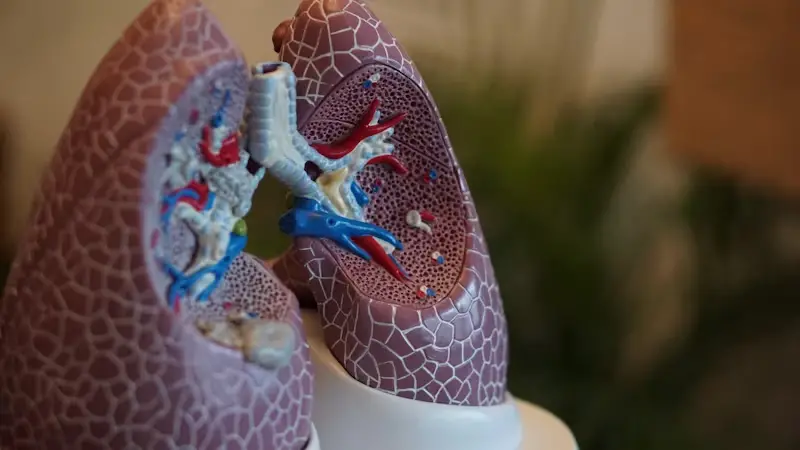For centuries, we’ve been taught that life and death are absolute opposites: you’re either alive, with all your body’s functions firing, or dead, with every sign of life absent. But what if there’s something beyond these two states? Recent discoveries by scientists reveal a fascinating new phenomenon, a “third state” that lies somewhere between life and death. This new discovery, where cells from dead organisms can reorganize into living structures, challenges everything we thought we knew about life, death, and the boundaries between them.
Life and Death: Are They Really Opposites?

Traditionally, life and death have been viewed as mutually exclusive states. Life is the presence of essential biological functions, while death signifies their permanent cessation. But groundbreaking research suggests there may be a third state where cells can continue to function and even develop new properties after the organism they belonged to has died. This revelation blurs the lines between life and death, opening up a new world of possibilities in science and medicine.
Scientists have discovered that, under certain conditions, cells can survive after death and reorganize themselves into new living structures. This third state not only expands our understanding of biology but also hints at applications that could transform regenerative medicine.
A New Form of Life: Multicellular Organisms Emerging After Death
One of the most remarkable findings in this new field of research is the potential for cells from dead organisms to reorganize into new multicellular life forms. This isn’t just about cells surviving after death—they’re transforming into new entities with unique abilities. For example, cells that once formed part of an organism are found to spontaneously reorganize into new structures capable of executing tasks that are completely different from their original functions.
Transforming Frog Skin Cells into Living ‘Xenobots’
At the University of Vermont, scientists have created “xenobots” from the skin cells of dead frog embryos. These xenobots, entirely different from anything found in a living frog, can move independently and use tiny hair-like structures called cilia to navigate their environment. While these skin cells wouldn’t normally exhibit such behaviors, in this new “third state,” they self-assemble and act almost like tiny robots, capable of tasks they weren’t designed for.
What’s more, xenobots show an incredible adaptability that reflects the true potential of cellular plasticity. By creating these tiny living machines from dead cells, scientists are pushing the boundaries of what it means to be “alive.”
Kinematic Self-Replication: A Unique Form of Reproduction
These xenobots also exhibit a curious ability called kinematic self-replication. Unlike traditional forms of reproduction, which involve cell division and growth, xenobots can replicate their structures without any need for new cell growth. This characteristic sets them apart from typical life forms and demonstrates how the third state challenges our understanding of biological processes.
Implications for Medicine and Technology
The implications of kinematic self-replication are profound, especially in fields like regenerative medicine and biotechnology. Scientists are exploring ways to use xenobots for medical applications, such as targeted drug delivery, tissue repair, and even environmental cleanup. Imagine tiny xenobots programmed to locate and dissolve harmful clots in arteries or clear toxins from polluted waterways. The possibilities are endless.
Human Lung Cells Form ‘Anthrobots’: A New Horizon for Cellular Life

Interestingly, frog cells aren’t the only ones that can achieve this new state of existence. Scientists have also observed human lung cells reorganizing into multicellular structures called “anthrobots.” These anthrobots can move, self-heal, and even repair neurons, showcasing their potential to revolutionize medical treatments.
Researchers believe anthrobots could be employed for a wide range of therapies. For instance, they could be used to deliver medication directly to affected areas or to repair damaged tissue in conditions like spinal cord injuries. These applications bring us closer to a future where the boundaries between biological life and robotic functionality blur.
Postmortem Cellular Survival: How Long Can Cells Last?
Not all cells die immediately when an organism does. The survival period for cells after death depends on factors like the environment, metabolism, and how they’re preserved. For example, human white blood cells can remain viable for several hours after death, while other cells might persist even longer under certain conditions.
In some species, muscle cells have been shown to survive for weeks, even after the organism itself has died. Understanding how and why some cells can persist in this third state might help scientists improve organ preservation techniques or develop methods for reviving certain cell functions after death.
Bioelectricity and Cellular Communication

One hypothesis scientists are exploring is that bioelectricity could allow cells to communicate and continue performing functions even after death. By studying these bioelectric signals, researchers hope to uncover how cells can remain active and reorganize in this third state. This research could help scientists unlock new ways to stimulate cellular activity in injured tissues or organs, potentially leading to groundbreaking regenerative therapies.
Regenerative Medicine: The Third State as a Game Changer
The discovery of this third state offers more than scientific curiosity; it also holds practical applications that could redefine the field of regenerative medicine. Scientists believe that, with further research, these newly discovered properties of cells could be harnessed to develop innovative treatments for a range of conditions.
Potential Medical Applications of Anthrobots and Xenobots
In the future, xenobots and anthrobots could be engineered to deliver targeted therapies, dissolve arterial plaque, or clear mucus from lungs in patients with chronic respiratory conditions like cystic fibrosis. These treatments could offer more effective alternatives to traditional drug delivery methods and potentially reduce immune system responses. The third state, therefore, is more than just a biological mystery; it’s a medical breakthrough in the making.
Built-In Safety Mechanism: The Natural “Kill Switch”

One major concern with any form of synthetic or altered life is the risk of uncontrolled growth. However, researchers have found that xenobots and anthrobots have a natural lifespan of about four to six weeks, after which they degrade. This natural “kill switch” ensures that they won’t proliferate uncontrollably, alleviating fears about potential risks associated with these new life forms.
Redefining Biology: How the Third State Changes Our Understanding of Life
The third state challenges the traditional view of life and death, expanding our definition of what it means to be “alive.” As scientists continue to explore this uncharted territory, we may see new advancements in biology, medicine, and even the legal definitions of life and death. This third state forces us to reconsider our fundamental beliefs about existence, cellular behavior, and the limits of transformation.
Conclusion: A New Frontier for Science and Medicine

The discovery of a third state between life and death opens up an incredible array of possibilities. From xenobots and anthrobots that challenge the limits of cellular life to new medical applications that could revolutionize treatments, this third state represents a profound shift in our understanding of biology. As researchers delve deeper into these findings, we’re likely to see new breakthroughs that not only transform our approach to science and medicine but also redefine what it means to be alive.
In the end, this third state is a reminder that science is a field of endless discovery. Just when we think we have the answers, nature surprises us with new questions. As we explore the mysteries of life and death, we find ourselves in a continuous journey toward understanding the true potential of existence.